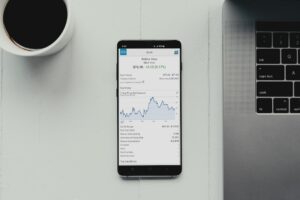Forex trading spread refers to the difference between the buying and selling price of a currency pair. It is essentially the cost of trading in the forex market. Understanding how to calculate and minimize the spread can significantly impact your trading profitability. In this article, we will discuss the importance of spread, how to calculate it, and strategies to minimize costs.
Importance of Spread in Forex Trading
Spread plays a crucial role in forex trading as it directly affects your profit or loss on each trade. When you open a trade, you enter at the buying price, and to close the trade, you need to sell at the selling price. The difference between these two prices is the spread.
For example, if the buying price of EUR/USD is 1.2000 and the selling price is 1.2005, the spread is 5 pips. This means that you will start your trade with a 5-pip loss, which needs to be recovered before you can make a profit.
Calculating Forex Trading Spread
Forex spread is typically measured in pips, which is the smallest unit of price movement in the currency market. Most currency pairs are quoted with four or five decimal places, and the last digit represents a pip.
To calculate the spread, subtract the selling price from the buying price. For instance, if the buying price of GBP/USD is 1.4000 and the selling price is 1.4005, the spread is 5 pips.
However, some brokers quote currency pairs with an additional decimal place, known as a fractional pip or pipette. In this case, the spread might be expressed as 1.40005-1.40010, and the spread would be 0.5 pips.
Minimizing Trading Costs
Reducing trading costs by minimizing spreads can have a significant impact on your overall profitability. Here are a few strategies to help you minimize costs:
1. Choose a Low-Spread Broker: The first step in minimizing trading costs is to select a broker that offers competitive spreads. Different brokers have varying spreads, so make sure to compare them before opening an account. However, keep in mind that low spreads should not be the only factor to consider; other aspects such as regulation, reliability, and trading platform should also be evaluated.
2. Trade During High-Liquidity Periods: Liquidity refers to the number of market participants actively trading a currency pair. Higher liquidity leads to tighter spreads. The forex market is most liquid during overlapping trading sessions, such as when the European and U.S. markets are open simultaneously. Trading during these periods can help you take advantage of tighter spreads.
3. Avoid Trading During Economic News Releases: Economic news releases can lead to increased market volatility and wider spreads. Major economic announcements, such as interest rate decisions or non-farm payroll reports, can cause significant price fluctuations. It is advisable to avoid trading during these events unless you have a specific strategy to handle volatile market conditions.
4. Utilize Limit Orders: Instead of executing trades at the market price, consider using limit orders. A limit order allows you to specify the maximum price you are willing to pay to buy or the minimum price you are willing to accept to sell. By using limit orders, you can potentially enter trades at more favorable prices, reducing the impact of the spread.
5. Consider Forex Rebates: Some brokers offer forex rebates, also known as cashback, to their clients. These rebates are a percentage of the spread or commission paid by the trader. By opting for a broker that offers rebates, you can earn back a portion of your trading costs, effectively reducing the overall spread.
Conclusion
Understanding how to calculate forex trading spread and implementing strategies to minimize costs is essential to improve your trading profitability. By choosing a low-spread broker, trading during high-liquidity periods, avoiding volatile news releases, utilizing limit orders, and considering forex rebates, you can reduce the impact of spreads and increase your chances of success in the forex market. Remember, every pip counts, and minimizing costs can make a significant difference in the long run.






